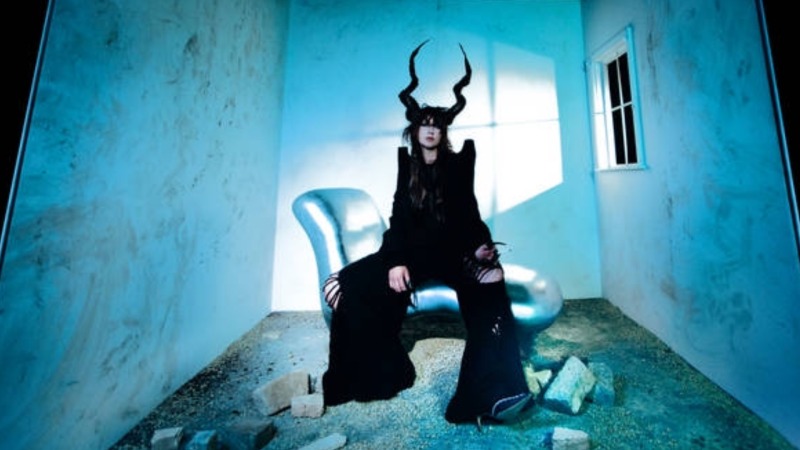Metamorphosis Has an Ominous Beauty on Circuit des Yeux’s Halo On the Inside
The Chicago-based vocalist works in darkness and electronics across her imaginative eighth album, touching on the possibilities afforded in embracing change.

Pan is one of those mythological figures we can’t get enough of. A mix of animal and human, ambling between traditionalism and libertinism, Pan’s antics make for irresistible entertainment in ancient Greece and a figure of fascination for literary and spiritual movements that look back to Greek tradition for evidence of their own parentage. Chicago-based experimentalist Haley Fohr, better known as Circuit des Yeux, found herself fascinated with Pan’s trajectory and how metamorphosis maps onto her personal life and her artistic practice. The essence of Pan’s idiosyncratic, melodic, messy mythology weaves its way through Fohr’s latest output as Circuit des Yeux, Halo On the Inside—a bold, nocturnal take on the folksy experimentalism that has become the project’s modus operandi.
If change is the only constant, then how we think about change is in a natural state of flux. That’s especially true for someone like Fohr. Her last full-length as Circuit des Yeux, -io, wrestled with grief as the ultimate emotional manifestation of devastating change. With the help of a small but mighty orchestra, Fohr suspended any subtlety to ensure her experiences with trauma and devastation registered. Halo On the Inside is different. Change promises something attractive, ascendant even. Fohr leans into electronics, looming over a gothic territory with plenty of detours into abstraction that accentuate her brilliant vocals, giving them an operatic quality. Her balance of catchiness and complexity is admirable, with little distracting from the ominous yet enticing mood that stretches over the whole album.
To say that Halo On the Inside feels dark feels obvious, but that’s a big part of the story. Fohr made composing her 9-to-5: PM to AM, I mean. She shifted her workflow to the graveyard shift, in the depths of her basement in a sleeping city, letting her hear her body and her surroundings in new ways. You can feel that visceral quality in the throbbing low-flying electronics on “Megaloner” that grow into a more constant thumping on “Canopy of Eden.” As reminiscent of Depeche Mode as a track like “Canopy of Eden” may be, it’s at least twice as ominous, but it doesn’t come from a place of pessimism: After enduring a chintzy tourist trap near Puerto Vallarta, Fohr fantasized a scenario where she and her fellow visitors could chart their own destinations. They could escape the God-forsaken radio that blared everywhere.
-

-

-

-

-

-

-

-

-

-

-

-

-

-

-

-

-

-

-

-

-

-

-

-

-

-

-

-

-

-

-

-

-

-

-

-

-

-

-

-








































